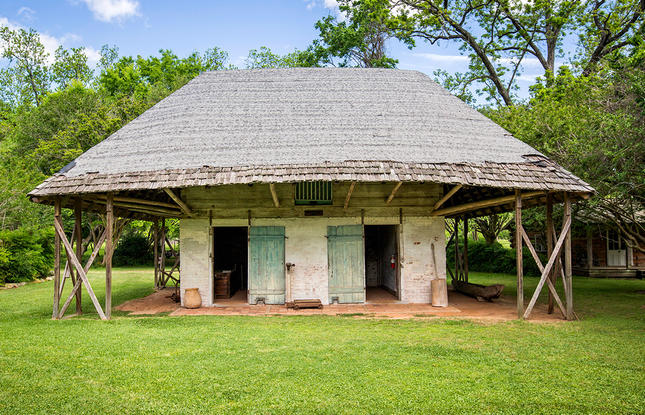Melrose Plantation
For more than two centuries, the Cane River area near Natchitoches has been home to a distinct cultural group: Afro-Creoles. This group descended from the French planter Claude Thomas Pierre Metoyer and his African wife, Marie-Thérèse Coin-Coin. The Afro-Creole community continues to preserve and share their unique heritage.
Melrose Plantation, formerly known as Yucca Plantation, was the original seat of the Afro-Creole Metoyer family. It was owned and operated by Coin-Coin, a former slave who became a wealthy landowner and businesswoman. Melrose historian Francois Mignon wrote, “Among other sterling attributes, Marie-Thérèse was endowed with unusual energy and intelligence. This resourceful woman, her sons and her slaves worked valiantly — clearing the land; cultivating tobacco, corn and other crops; raising cattle —to achieve a successful plantation operation.”
The Melrose complex includes the original “big house” as well as many plantation outbuildings. One of these, the “African House,” is an extremely rare example of African-influenced architecture in the United States. Melrose was later home to the famed African American folk artist Clementine Hunter, whose work is prominently featured in murals inside the African House. Working in the middle decades of the 20th century, Hunter documented the world of Cane River in exquisite paintings rendered in her unique style.







